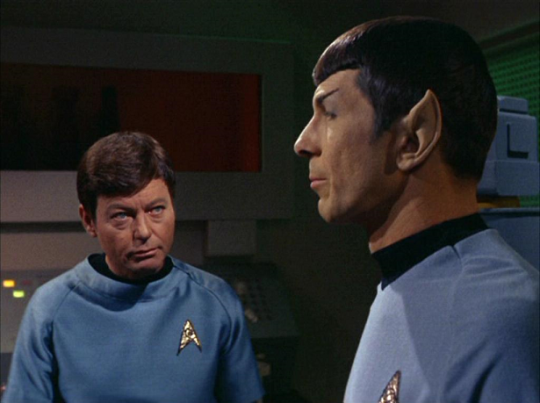By Adam Blair, Executive Editor

Fans of the original Star Trek series are familiar with the neat division between logic and emotions represented by the often-feuding characters of Mr. Spock and Dr. McCoy. The coldly rational Vulcan and the irascible, sentimental “country doctor” bicker more like an old married couple than like fellow officers on a 23rd-century starship. (This video provides just a few examples of their frenemy-like banter.)
What does this have to do with retail? Well, as consumers, we may think we’re all rational Spocks when it comes to buying things, but the truth is there’s a lot more “Bones” McCoy emotionalism involved. The savviest retailers have known for quite a while just how big a role feelings play in motivating customers to actually “pull the trigger” and make a purchase.
As far back as 2003, Harvard Business School professor Gerald Zaltman, author of How Customers Think: Essential Insights into the Mind of the Market, noted that 95% of all cognition occurs in the subconscious mind.
Asked in an interview how marketers might begin to understand behaviors that remained hidden even from consumers themselves, Zaltman replied:
“There are several helpful approaches. One is to double check stated beliefs with actual behavior. For example, many consumers report handling competing brands and comparing prices at the point of purchase. However, observations of these same consumers often reveal that they don’t even look at alternatives to the chosen brand.”
In some cases, the customer’s own bodily responses provide a truer picture of what’s going on. “Another option uses physiological or response latency measures,” said Zaltman. “These often reveal that what consumers actually believe or think, as measured by unconscious physical reactions, contradicts what they say when asked directly.“
Today’s technology includes an array of tools that can quantify these feelings and contradictions at a granular level. For example, wearable biometrics that measure responses such as skin temperature and blood pressure — the same types of reactions measured with so-called "lie detector” technologies — can show how strongly a customer is reacting in a given situation.
“This goes beyond sentiment; it’s about specific emotions,” said Ed King, VP of Strategy for MaxMedia. “It’s a proven idea that 90% to 95% of shopping and purchase decisions are made in the non-conscious mind. So if we know that the non-conscious is what’s making us reach into our wallets, what’s the actual engine for making that happen?”
MaxMedia uses both biometrics and video analytics to discover “EpX,” or Emotions Per Experience. The video tools anonymously measure how micro-expressions (fleeting facial expressions that are not discernible to the human eye) change during the different parts of a shopping experience.
The company catalogs four positive and four negative emotions for its retail analyses. The positives are happiness, excitement, craving and gratitude; the negatives are confusion, disappointment, frustration and anger. “We apply a zero-to-five scale for each, so if we see that someone has a 3.4 out of 5 for frustration and only a 1.2 out of 5 for happiness, we can say that they are approximately three times as frustrated as they are happy,” said King
MaxMedia then analyzes the touch points in a retail location that make up its different zones of experience, and applies an emotional metric to each. (There can be as many as 50 zones within a single store.)
Opportunities To Make The Mundane Memorable
Once retailers have a reading of the emotional “temperature” in the different parts of their store, they can take action to, as the old song goes, “accentuate the positive and eliminate the negative.” In addition to this type of damage control, MaxMedia believes there are multiple opportunities to transform neutral zones into positive places.
“We’ll look at which zones are reading negative, which ones positive and which ones neutral,” King explained. “The majority may simply be neutral, but that doesn’t mean there isn’t anything to be done to improve them. In fact, the biggest opportunities are in ‘emotionalizing’ neutral experiences. If you can make the mundane memorable, then it becomes a positive touch point.”
For example, a hotel chain wanted to improve the guest experience for one of the most basic functions at any property: signing in at check-in. “They emotionalized it by offering the document for the guest to sign, but also displaying a case containing eight different pens, each with a different style and texture,” said King. “The guest could choose which pen they wanted to sign their name with, and in doing so the hotel moved this neutral, unmemorable experience to one that is interesting, noteworthy and memorable.”
There’s a bonus for omnichannel retailers: the physical store offers multiple opportunities to improve the emotion quotient for its customers. And if everyone is saying stores have to offer experiential retail, shouldn’t we try to make those experiences emotionally positive ones?






